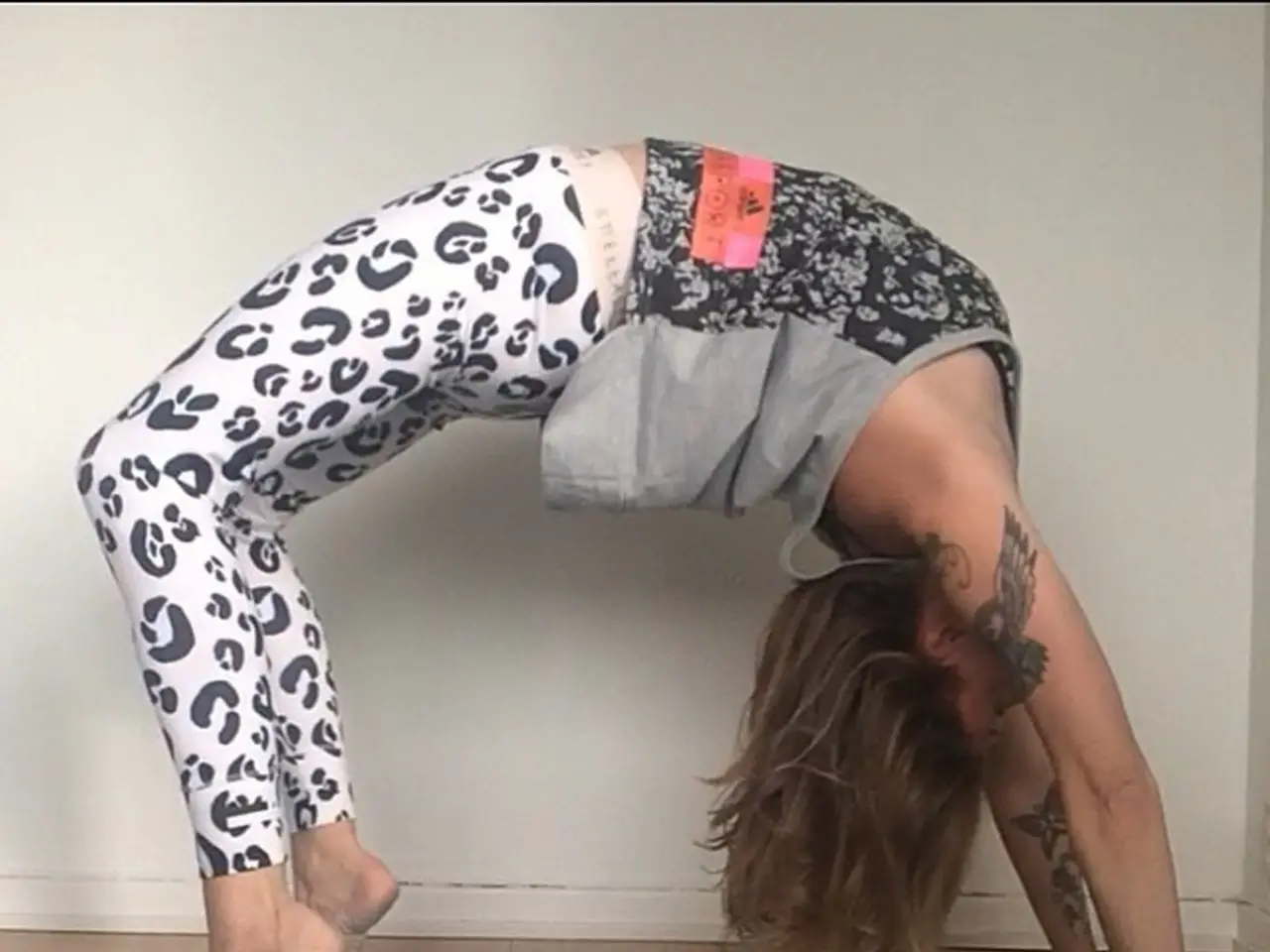Exercises for Thyroid Issues: 8 Yoga Positions
Yoga, an ancient practice originating in India, is increasingly being recognised for its potential benefits in managing thyroid disorders. A growing body of evidence suggests that yoga can be a beneficial complementary therapy, particularly for hypothyroidism.
One advanced yoga pose, the Fish Pose (Matsyasana), is often used as a counter pose to the shoulder stand or Plow. To perform the Fish Pose, an individual should sit down with their legs extended, place their hands on the mat behind them, lower their elbows to the mat, align their shoulders with their elbows, gently drop their head back, keep their chest up and open, breathe deeply three times, slowly lift their head up, and release their arms.
Another pose, the Bridge Pose (Setu Bandhasana), is good for strengthening the back. To do the Bridge Pose, a person should lie on their back, draw their feet inwards towards their hips, keep their feet and knees in line with their hips, press their palms into the floor, lift their hips up, tuck their chin into their chest, breathe deeply three times, and slowly lower their hips.
The Plow Pose (Halasana) is another advanced yoga technique requiring core and arm strength, as well as spine flexibility. This pose potentially improves blood flow in the neck and throat area, where the thyroids are located.
The Shoulder Stand (Sarvangasana) pose is an advanced move that may improve blood flow in the neck and throat area, contributing to improved hormonal balance and metabolic regulation.
Scientific evidence supports the use of yoga as a complementary therapy for hypothyroidism. A 2016 study showed that attending yoga sessions (four times per week for six months) led to improvements in cholesterol levels, thyroid-stimulating hormone (TSH), and even reduced the need for thyroid hormone medication in patients. This indicates a positive influence of yoga on thyroid function markers commonly affected in hypothyroidism.
A rigorously designed randomized controlled trial conducted in 2022 tested a 6-month tele-yoga intervention combined with levothyroxine treatment in hypothyroid patients. The results demonstrated improvements in health-related quality of life, thyroid profile (including TSH), blood pressure, fatigue, and stress. This suggests yoga can enhance both biochemical and symptomatic aspects of hypothyroidism when combined with conventional therapy.
Beyond physiological benefits, yoga's stress reduction and relaxation effects may help mitigate the psychological burden often associated with thyroid disorders, contributing to improved overall well-being.
Regarding hyperthyroidism, while direct evidence is sparse, yoga may still play a supportive role by reducing stress and improving quality of life, which are important components in managing hyperthyroid symptoms. However, most scientific studies focus on hypothyroidism.
In summary, scientific evidence supports yoga as a beneficial complementary therapy for hypothyroidism, improving thyroid function tests, reducing medication needs, and enhancing quality of life. The mechanisms likely include direct stimulation of thyroid circulation through specific poses, stress reduction, and improved physical fitness. For hyperthyroidism, while direct evidence is sparse, yoga’s general health benefits could still be valuable adjuncts to conventional treatment.
Recommended yoga poses for thyroid health include the Supported Shoulder Stand (Salamba Sarvangasana), Plow Pose (Halasana), Fish Pose (Matsyasana), Bridge Pose (Setu Bandha Sarvangasana), Cobra Pose (Bhujangasana), and the Boat Pose (Navasana). These poses help improve blood flow and may stimulate thyroid function.
However, it is essential to note that individuals with high blood pressure, neck injuries, or glaucoma should avoid the Fish Pose. The Boat Pose requires core strength, flexibility, and can potentially improve blood flow in the neck and throat area. The Cobra Pose may help with back and neck flexibility. The Upward Bow Pose (Urdhva Dhanurasana) helps to stretch the chest, back, and neck.
Incorporating yoga into thyroid disease management—especially hypothyroidism—can be a scientifically supported, safe complementary approach alongside standard medical care. Yoga is an exercise that helps reduce a person's stress levels and improves overall well-being, making it a valuable addition to any health regimen.
- The Supported Shoulder Stand (Salamba Sarvangasana), one of the recommended yoga poses for thyroid health, may improve blood flow in the neck and throat area, contributing to better hormonal balance and metabolic regulation.
- A 2022 study demonstrated improvements in health-and-wellness, including thyroid profile and blood pressure, when a 6-month tele-yoga intervention was combined with levothyroxine treatment in hypothyroid patients.
- The Boat Pose (Navasana) is a yoga pose that requires core strength, flexibility, and can potentially improve blood flow in the neck and throat area, aiding in thyroid function.
- Beyond the physiological benefits, yoga's mental-health advantages may alleviate the psychological distress often associated with thyroid disorders, enhancing overall health-and-wellness.
- In addition to the Fish Pose, other recommended yoga poses for thyroid health include the Plow Pose (Halasana), the Fish Pose (Matsyasana), the Bridge Pose (Setu Bandha Sarvangasana), the Cobra Pose (Bhujangasana), and the Upward Bow Pose (Urdhv Dhanurasana). These poses, when practiced regularly, can help stimulate thyroid function and improve blood flow.




